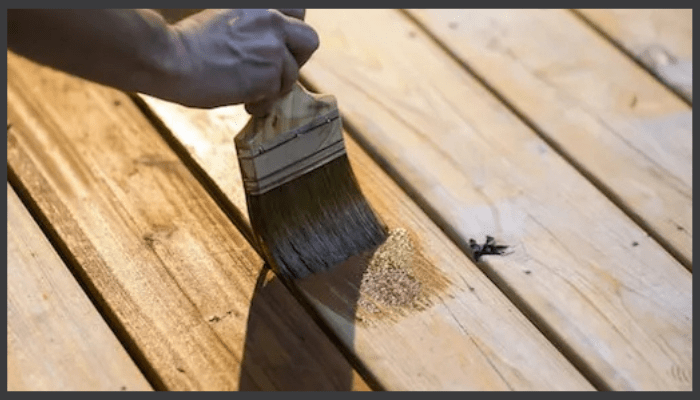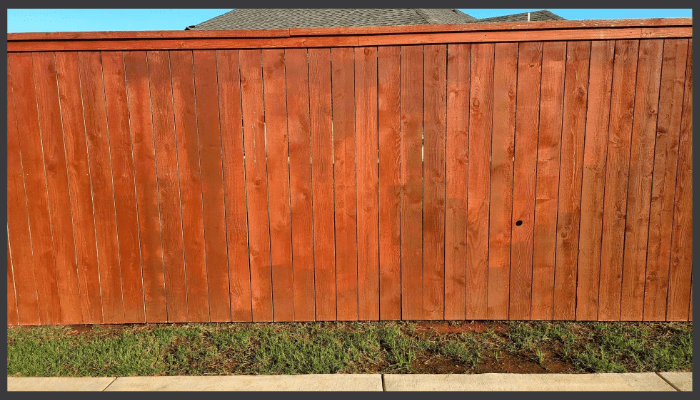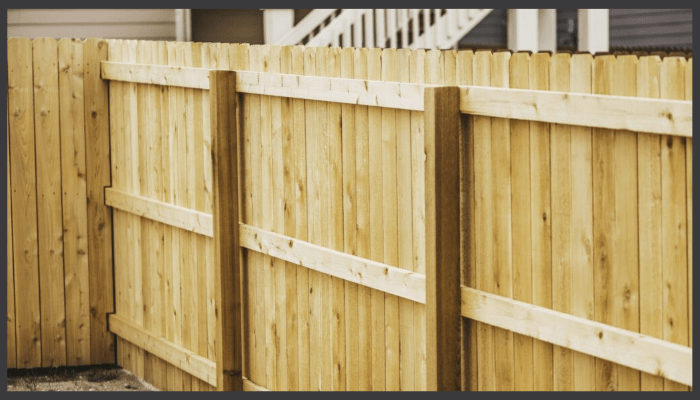Best Way to Fix a Sticky or Uneven Finish on Hardwood Fence Palings
Table of Content:
-
Why a Sticky or Uneven Finish Happens on Hardwood Fence Palings
-
Understanding Hardwood Fence Palings in NSW
-
What Causes a Sticky or Uneven Finish on Timber Palings
-
The Best Way to Fix a Sticky or Uneven Finish on Hardwood Fence Palings
-
Tools and Materials You'll Need
-
Common Mistakes to Avoid When Refinishing Hardwood Fences
-
NSW Climate Considerations for Exterior Timber Finishes
-
Prevention Tips: Keeping Your Hardwood Fence Smooth and Even
-
Why Choose Pinus Sawmills for Hardwood Fencing and Finishing Supplies
-
Conclusion
-
Frequently Asked Questions
Why a Sticky or Uneven Finish Happens on Hardwood Fence Palings (and the Best Way to Fix It)

Hardwood fence palings can look brilliant at first, but if the finishing coat goes wrong you’ll quickly notice the sticky or uneven finish that ruins the look.
Then parts go sticky, tacky, or get blotchy patches everywhere. That sticky finish ruins the appearance and tells you moisture, sun, or dodgy finishing work is attacking your timber.
This guide covers the best way to fix sticky or uneven finish on hardwood fence palings, whether you're DIY or trade. Get the method right and your fence gets back to a smooth finish without replacing the whole thing.
Understanding Hardwood Fence Palings in NSW
Hardwood fence palings are those vertical boards made from tough Australian timber. Common paling styles in NSW include Spotted Gum, Ironbark, Tallowwood, and Blackbutt all chosen for their strength, rot resistance, and weather durability.
Problem is their density, natural oils or tannins affect how finishes stick.
Dense hardwoods, sometimes oily ones, need careful sealing when used exterior. Slap on oil or stain wrong and you get sticky surfaces or patchy absorption.
Your timber projects need to factor in what the wood actually does. Know your specific hardwood and you'll pick the right preparation and finish steps.
What Causes a Sticky or Uneven Finish on Timber Palings
When finishes fail, you get sticky patches, uneven coverage, or spots where nothing's adhered properly. Here's what goes wrong on exterior fences:
Over Application of Decking Oils or Stains
NSW swings between scorching dry and humid rain. High humidity or finishing before rain stops proper curing, leaves sticky areas. Hot sun flash dries the surface layer, blocks deeper absorption, creates uneven finish.
Incompatible Layers or Products
Paint, varnish, or wrong coating over oil or existing finish won't get adhesion. New layers sit on top, never bond, end up peeling, uneven or feeling sticky.
Contaminated or Unprepared Surfaces
Mould, dust, old finishes not cleaned off means new finish can't bond evenly. You get blotchy colour or failed adhesion in patches.
Timber Density and Natural Oils
Dense hardwoods like Ironbark or Tallowwood absorb slowly. Natural oils or tannins repel finishes. Wood shows uneven absorption, finishes bead instead of penetrating. Surface preparation becomes essential to fix this.
The Best Way to Fix a Sticky or Uneven Finish on Hardwood Fence Palings
Here's how to fix sticky or uneven finishes on hardwood fences. Works every time if you follow it properly.
Step 1: Clean and Prepare the Timber
Clean the fence first. Timber cleaner, deck wash, mild detergent, whatever. Stiff brush to get mould and grime off. Rinse it.
Now wait. 24 to 48 hours drying in good weather. The wood needs to be completely dry or your new coating will trap moisture and go tacky again.
Step 2: Remove the Sticky or Uneven Finish
Got sticky patches or uneven spots? Strip them off. Mild tackiness, wipe with mineral spirits, white spirit, appropriate solvent. Isopropyl alcohol works. Lacquer thinner if you need stronger.
FineWoodworking forum says start gentle (Goo Gone, isopropyl) then go stronger if needed. Failed coating? Timber stripper or sand back to bare wood. 80 to 120 grit removes buildup.
Then 120 to 180 grit for smooth surface. Test solvents somewhere hidden first. Don't wreck the timber. Strip or wipe, then light sand to even everything out. Vacuum dust before refinishing. All of it.
Step 3: Apply a Fresh, Thin Coat of Exterior Oil or Stain
Get quality exterior oil, penetrating stain, UV resistant finish suitable for hardwood. Thin coats. Brush, roller, applicator pad, follow the grain.
Watch for pooling in joints and recesses. Wipe excess after a few minutes or it'll stick. First coat needs to dry completely before second coat.
Dense hardwood sometimes needs light scuff sand between coats.
Step 4: Allow Proper Curing Time
Curing matters. Mild NSW conditions, cool shade, low humidity, let the finish set undisturbed. No direct sun, dew, rain during curing. Humidity slows it.
Hot sun dries the surface too fast, traps solvents underneath. Apply early morning or late afternoon. Plan several dry days ahead.
Some deck stains need weeks in tricky conditions for full cure. Cured properly, fence feels smooth and stable. Not sticky anymore.
Tools and Materials You'll Need
To fix this properly, get these:
-
Timber cleaner or deck wash. Mild detergent works too
-
Soft brushes, stiff brushes, applicator pads, rollers, flagged brushes
-
Sandpaper: 80 to 120 grit for rough work, 120 to 180 for finishing
-
Mineral spirits, white spirit, whatever solvent works
-
Exterior timber oil or stain. Australian brands better for our conditions
-
Wood filler if there's gaps. Replacement palings if some are stuffed
-
Gloves, eye protection, P2 dust mask
-
Vacuum, blower, brush for dust
Get finishes made for Australian hardwood that handles sun, UV, humidity. They last longer here.
Common Mistakes to Avoid When Refinishing Hardwood Fences
Direct sunlight coating? Flash dries, traps solvents. Bad idea. People rush cleaning and drying. Damp or dirty surface ruins adhesion every time.
Seen it happen too often. Thick coats, overlapping without cure time between, finish fails. Interior sealers on exterior timber? Won't last outdoors.
Small sticky spots ignored become big problems. Fix them early. These mistakes wreck the quality of your finish. Waste of time and money if you're unsure what you're doing.
NSW Climate Considerations for Exterior Timber Finishes
NSW timber cops strong UV, humidity, heavy rain sometimes, salt air near coast. Cheap finishes die fast here. Get products with UV protection, water repellents, fungicides.
Plan to redo every 2 to 4 years depending on location. Keep paling bottoms off soil and mulch. Moisture wicks up otherwise.
Trim plants back. Need airflow, less moisture hanging around.
Pick stable weather for refinishing. Not humid days, not before rain, not 40 degree heat.
Prevention Tips: Keeping Your Hardwood Fence Smooth and Even
Knowing how to stain and maintain your hardwood fence properly starts with thin coats and regular cleaning. Wipe excess before it dries — simple habits that keep your fence smooth and even for years.
Small patches need re oiling early. Don't wait till whole sections are gone. Good drainage matters. No ground contact. Moisture comes up from below.
Breathable finishes let timber move without trapping water. Get proper exterior grade stuff suitable for Australian hardwood.
Not the cheap plastic coated rubbish. Your property deserves better than that. Prior planning prevents future headaches with these projects.
Why Choose Pinus Sawmills for Hardwood Fencing and Finishing Supplies
Pinus Sawmills know Australian hardwood fencing. They've got the palings, they'll tell you what finish works, stock the right oils and stains for NSW weather.
Local hardwood's what they do. Materials are suitable, they actually assist with maintenance advice if you need it. Not like some places that just take your money.
Conclusion
Best way to fix sticky or uneven finish on hardwood fence palings? Clean it, strip the stuffed finish, sand back to timber, thin coats of proper exterior finish, let it cure when the weather's right.
NSW’s harsh weather quickly shows the difference between hardwood vs. softwood fence palings hardwood simply lasts longer when stained, sealed, and maintained properly.
Do it right once, fence stays smooth and handles the weather for years. Less work in future.
Frequently Asked Questions
Why is my fence still sticky after stain?
Dusty, damp, too thick application. Won't cure. Sometimes waiting helps. Usually you're stripping it back and starting again with thinner coats though.
Can I just wipe away a sticky finish without sanding?
Superficial tackiness, maybe mineral spirits work. Most times you're sanding back to bare wood. Only way to get proper adhesion and even finish.
How do I identify which finish is causing the stickiness?
Polyurethane breaks down. Varnish goes sticky. Incompatible layers over oil do it too. Test with denatured alcohol or mineral spirits on small area. Home Improvement Stack Exchange has info on this.
What's the best finish for Australian hardwood fences to avoid uneven finish?
Exterior grade oils, penetrating stains for hardwoods. UV stabilisers, water repellents. Interior sealers are useless. Thick film coatings trap moisture.
How soon can I apply another coat if the first one goes tacky?
Previous coat needs to be completely dry first. Humid or cold? Takes way longer than the tin says. Rush it and adhesion fails.
When should I perform maintenance on my fence to keep that smooth finish?
Check and clean yearly. Re oil or stain every 2 to 4 years. Earlier if you see wear or sticky spots starting.
Can strong sun or humidity really cause an uneven finish?
Sun flash dries the surface. Traps solvents. Humidity stops proper cure. Rain's worse. Both cause blotchy dark patches.
What are the early signs of finish failure on a timber fence?
Fixing the sticky or uneven finish on hardwood fence palings right away is the best way to stop minor surface problems from becoming expensive repairs later.




